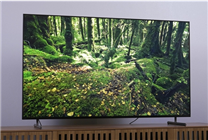Understanding High-End TVs: A Guide to OLED, MiniLED, QD-MiniLED, RGB-MiniLED, and MicroLED
Summary:
- Explore five leading TV technologies to help you make an informed purchase: OLED, MiniLED, QD-MiniLED, RGB-MiniLED, and MicroLED.
- Learn the advantages and disadvantages of each technology, guiding you toward the best fit for your entertainment needs and budget.
- Pro tips for shopping: Understand critical features like brightness and partition counts to avoid common pitfalls.
Introduction to TV Technologies
Purchasing a high-end TV can be overwhelming, especially with terms like OLED, MiniLED, and MicroLED floating around. No need to worry! This guide will break down these technologies into simple language, making you feel like a "half-expert" in no time.
OLED TV: Self-Lighting Pixels
What is it?
OLED (Organic Light Emitting Diode) technology allows each pixel to emit its own light, functioning like countless tiny light bulbs that can be turned on and off independently.
Advantages:
- Exceptional Black Levels: OLEDs display true black by turning off pixels completely, enhancing contrast in dark scenes.
- Fast Response Time: With response speeds significantly faster than LCDs, motion appears smoother—ideal for watching sports or action films.
- Sleek Design: Thin and often bendable, OLED TVs fit well in modern living spaces.
- Eye-Friendly: Lower blue light emissions make them more comfortable for prolonged viewing.
Disadvantages:
- Limited Brightness: Peak brightness ranges from 800-1500 nits, making it less vibrant in sunny environments.
- Screen Burn-In Risks: Static images displayed for extended periods can lead to residual images over time.
- Higher Price Point: A 75-inch model generally exceeds $1,000, which can be a barrier for budget-conscious consumers.
Best For: Movie lovers and gamers seeking vibrant visuals and have a reasonable budget.
MiniLED TV: The Value Choice
What is it?
MiniLED technology is essentially an upgraded LCD. It uses significantly smaller LED backlights arranged closely to enhance contrast through "zonal dimming."
Advantages:
- High Brightness: Can exceed peak brightness levels of 1,000 nits, making bright scenes more vivid.
- Budget-Friendly: Generally priced at $400 to $600 for a 75-inch model—about 50% cheaper than OLED.
- Durable Lifespan: Well-dispersed heat aids longevity, reducing brightness loss over time.
Disadvantages:
- Halo Effects: Light bleed can occur in darker scenes, especially with fewer dimming zones.
- Average Color Performance: While better than standard LCDs, colors may not be as vibrant as OLEDs.
Best For: Viewers with medium budgets who prefer high brightness, particularly for sports and natural light scenes.
QD-MiniLED TV: Quantum Dot Enhancement
What is it?
QD-MiniLED combines MiniLED backlighting with quantum dots, which enhance color accuracy and vibrancy.
Advantages:
- Brighter Colors: Covers over 90% of the DCI-P3 color gamut, ideal for rich cinematic experiences.
- Increased Peak Brightness: Can achieve 2,000-3,000 nits, providing well-defined highlights and shadows.
Disadvantages:
- Higher Cost: Typically priced $1,000-2,000 above standard MiniLED options.
- Persistent Halo Issues: Although improved, halo effects can still occur in dark scenes.
Best For: Consumers desiring enhanced brightness and color depth without going to the OLED level.
RGB-MiniLED TV: The Color Specialists
What is it?
RGB-MiniLED uses red, green, and blue MiniLEDs as the light source without additional filters, directly mixing colors for a more accurate display.
Advantages:
- Superior Color Accuracy: Offers nearly 97% of the BT.2020 color gamut, perfect for high-saturation visuals.
- Stable Brightness: Retains color integrity even at peak brightness levels of 3,000 nits.
Disadvantages:
- Limited Availability: Fewer models are available, and they come with a higher price tag.
Best For: Enthusiasts who pursue ultimate color quality and have a flexible budget.
MicroLED TV: The Future of Viewing
What is it?
MicroLED utilizes micrometer-sized LED chips to create self-illuminating pixels, theoretically yielding extraordinary picture quality.
Advantages:
- Ideal Picture Quality: Offers limitless contrast and brightness reaching over 5,000 nits while supporting high resolutions easily.
- Incredibly Durable: Inorganic materials minimize aging effects and reduce burn-in risks.
Disadvantages:
- Extremely High Costs: Starting prices around $200,000 for smaller sizes place it out of reach for most consumers.
- Manufacturing Challenges: Difficulties in large-scale production hinder wide availability.
Best For: Wealthy individuals and businesses in need of cutting-edge display technology.
Practical Shopping Tips
- Partition Counts: Opt for MiniLED/QD-MiniLED TVs with over 1,000 partitions to minimize halo effects.
- Brightness Needs: Consider your viewing habits; 1,500 nits or more for daytime use, 1,000 nits is sufficient for night.
- Beware of Deceptive Labels: Ensure that advertised features align with specifications, particularly for MiniLED models.
Conclusion
Choosing a high-end TV is not about finding the "best" model, but rather the "most suitable" one for your needs. By considering your budget and viewing habits, you can enhance your home entertainment experience while avoiding common pitfalls.




